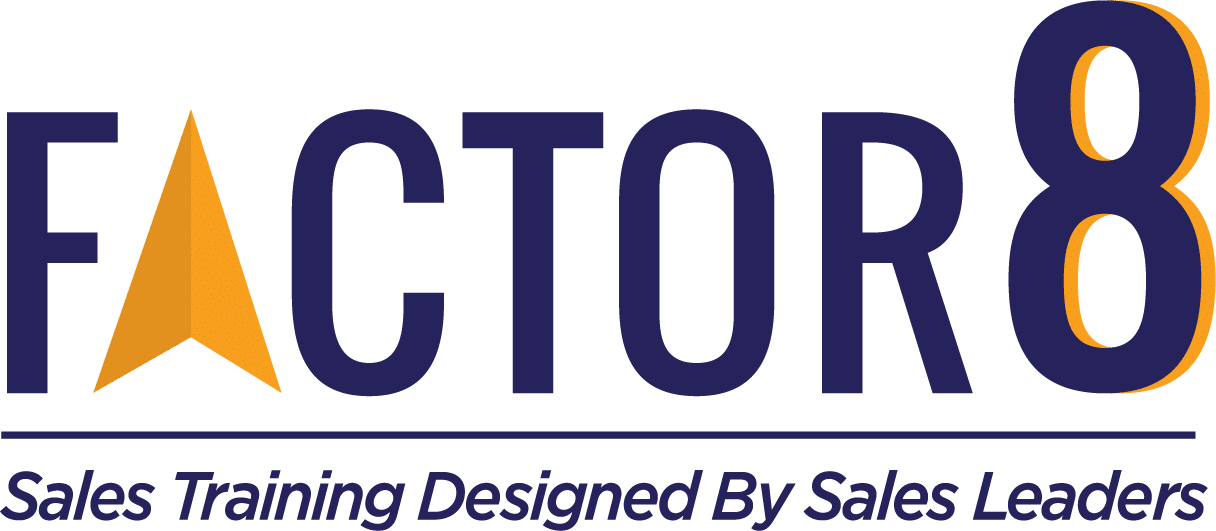8 Sales Rep Onboarding Best Practices
By now you’ve heard that the sales rep onboarding experience is a major factor in how they ramp to quota and ultimately affects how they feel about your company.
There are about 3 million moving parts in an onboarding program since it happens across so many departments, mostly outside of sales. Because of this, it’s easy to lose our way during onboarding. One of the most important hindrances is the lack of investment — both in effort and money — in onboarding.
Insidesales.com did a study that found organizations spend an average of 3x more on rep tools than on rep development, with the average rep having between 5-10 tools. Similarly, Training Magazine found that organizations spend on average 25x more on recruiting than development.
Moreover, Training Magazine tells us that a good onboarding program can cut ramp time and attrition by 50%. If we focus more time on crafting an onboarding program that will help retain the reps we recruit, we save time, money, and energy down the line.
So let’s do this! Here are 8 best practices you can dive into fixing right now.
Integrate These 8 Best Practices Into Your Sales Rep Onboarding
- “Just-in-time” training
- Leverage sales (not HR) professionals
- Balance software and traditional training methods
- Continue onboarding long after the rep is “ready”
- Adopt the six critical components of a training program
- Use ample multimedia resources
- Create a formal, but flexible, rep training program
- Set realistic, data-based expectations
Let’s dive a little deeper into why and how to integrate these tips into your onboarding.
1. “Just-in-time” Training
When building an onboarding program, it’s tempting to start by listing all the things “Johnny” may ever need to know and start from the top. Instead, try slicing off only what Johnny needs to know in month one.
It can be tempting to dive deep into company waters with things like histories, organizational charts, and other detailed and specific areas. It’s more effective to shift this information to the backburner for the time being and focus only on what the new rep needs in the first month to be successful. After all, how often does a customer quiz your rep on key events in the company’s founding?
Onboarding training should mirror what a rep’s day-to-day activities will look like once training is finished during the first month on the job (and only that first month). This ensures reps don’t feel like a fish out of water when the time comes to execute the tactics taught in training.
Why stop at month one? Because we want our reps to come out of onboarding feeling confident! We want them ready to pound the phones and execute what they learned! If we start introducing them to all the sales process complexities, advanced products, and deep conversations, then we run the risk of scaring or overwhelming them.
This is a time when “you don’t know what you don’t know” is a good thing. If your reps will likely spend that first month talking to existing happy customers or cold calling and leaving a lot of voicemails, stop training there. Bring them back later for the rest.
2. Leverage Sales (Not HR) Professionals
Aberdeen reported that 85% of the sales teams considered “best-in-class” use professional sales trainers or curriculum. But the majority of us outsource our onboarding to HR.
This absolutely does not mean that your sales managers should be the trainers. It means that as a sales leader, you have sales managers and a sales training manager reporting to you (or at least attending your meetings). It could also mean that you have a sales manager who acts as a liaison to training.
But what it definitely means is that you and your sales team all know what is being taught, agree with the how, and are thrilled with what reps can do when they graduate from the onboarding training.
Some companies shy away from investing in an expert for new hires due to the high turnover rate. But, by investing in good sales training and following best practices, companies can reduce new hire turnover rate and save money in the long run.
3. Balance Online and Classroom Training
What we use to teach reps is another balancing act between digital learning and resources and traditional training methods.
Best practice? Use technology for about 30% of your overall curriculum. Much more and we’re missing the opportunity to engage new reps and ensure their first month is lonely and, let’s face it: boring.
Online learning is easiest to leverage for one of the following areas:
- Rote knowledge that isn’t likely to change. This includes policies, laws, company history, and unchanging products.
- Already-created, third-party curriculum. Commonly this is from technology vendors like Salesforce or basic Microsoft how-to assets
- Trusted adviser curriculum. If you’re working with social, sales, or marketing experts already and have adopted their methodologies, ask about online resources to onboard new reps.
Leverage your training department’s learning management system with whatever you’re doing. You’ll want to track what reps have and haven’t done and add a layer of accountability with reporting and testing.
4. Don’t Let It End! Continue Training Even After Onboarding
Rep development should be ongoing. Don’t ever fall into the trap of “They’re trained! My job here is done.” That’s akin to the NFL putting players in preseason camp and then stopping practice when the regular season begins.
Development is an ongoing sport.
At Factor 8, we’re huge champions of sending new reps to the phones early and often. But that is with the assumption that they’ll come back to the classroom to address the gaps they find while out on the harsh streets of your sales floor. It’s also assuming that managers are closely keeping track of rep progress and development needs.
How do you facilitate this?
Try to organize the curriculum into three levels:
- Level 1 maps to onboarding – the foundational/month 1 skills.
- Level 2 is “just in time” after reps master level 1 and get 6-12 months under their belt. They’re ramped to quota, and it’s time for ongoing development to keep growing and do the whole job well.
- Level 3 maps to the mastery of the job in years 2 to 3 — more advanced skills to help them be superstars.
Between each level we add exercises, activities, assignments, and refreshers to keep the skills top of mind, show new ways to try certain tactics, and help managers engage reps in 1:1 and team skill development. The Sales Bar helps us make all of this accessible on-demand so teams can learn what they want to when they want to while still keeping track. We also drip new content monthly and use leaderboards to keep things fresh and different so users want to log back in.
Use this as an example of the microlearning and ongoing development young reps crave. Millennials expect a certain percentage of learning to be in the classroom and online, and they expect opportunities to develop themselves long after onboarding.
Offering blended learning, leveled learning, and ongoing learning checks all those boxes.
5. Adopt the 6 Critical Components of a Sales Training Program
If you’re just starting to build your program or you’re going in to assess yours, start by evaluating what’s being trained. It’s easy to go deep into systems and products, but those are just two of the six components of well-rounded onboarding training:
- Systems and tools — Your CRM, intranet, engagement tool, dialer, etc.
- Product and service — What you’re selling. Tip: Focus on “how to sell it” versus a full rundown of product history, speeds, and feeds. This harkens back to best practice #1 and maintaining training relevancy. If your product people are teaching this, chances are your reps don’t need half of it and are using this time to snooze.
- Sales — Even if you hire for experience, reps need to be taught how to sell your services to your customers in your industry over the phone. Haven’t met a new hire yet who doesn’t.
- Process — Think of how your leads and orders get processed internally and who a rep goes to for the top customer questions. In other words, how do you get stuff done at your company?
- Acumen — Sorry folks, they’re not coming out of school with business acumen and certainly not industry and customer acumen. This is a big gap, and filling it will drastically shorten ramp time.
- Manager integration — this is where tip #5 really comes to life, both during and after onboarding. Reps need to see their leaders often, and training needs input and oversight.
6. Utilize Ample Multimedia Resources
No two reps are identical when it comes to learning style. Make sure you’re meeting every new hire where they’re at by using a mix of helpful resources.
This includes but is not limited to:
- Interactive e-learning software
- Traditional books
- Instructor-led training – virtual or in-person
- Real-life practice
Mixing up these methods not only appeals to reps with different learning styles but also helps keep training exciting and fresh. Who wants to sit and listen to someone else make calls all day and slap a “training” label on it?
7. Create a Formal, but Flexible Rep Training Program
If you’re not putting all new hires through the same rep onboarding process, how can you ever tell if what you’re doing is working?
As we said: Different reps have different learning styles, so it is important to remain flexible to an extent. Just make sure you have some core pillars of onboarding training in place so all new hires are experiencing the same process.
This helps you measure KPIs and tweak your processes if weak spots surface.
8. Set Realistic, Data-Based Expectations for Your New Reps
How many times have your managers set sky-high call quotas for new reps? How many times have they failed to reach it? But, most importantly, how many times has this been documented?
The only thing more frustrating (for both rep and manager) than someone consistently underperforming on quotas, is for there to be nothing in place to fix it moving forward.
Make sure when you’re setting expectations and KPIs for new hire reps that they are based on data. Once you have a fleshed-out onboarding process, it will be easier than ever to keep track of this information.
Find a Tool That Works for Your Onboarding Needs
What if we told you there’s a tool that complements in-person sales training, allows managers to monitor new hire learning during onboarding, and offers a wide variety of inside sales resources?
It’s not magic — it’s The Sales Bar. Fill out the form below to learn more.
Want more information on our sales rep onboarding programs?
Contact us today to request information on our customizable virtual sales training programs
available for reps (and managers).

